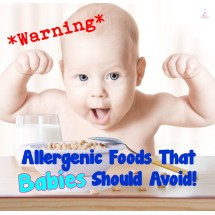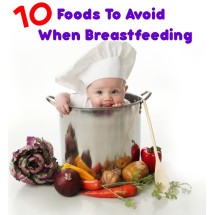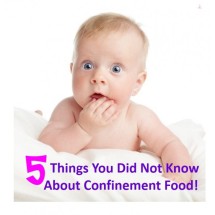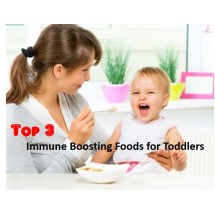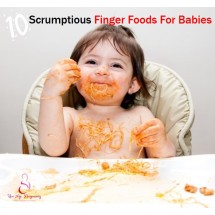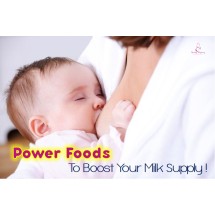
The role of nutrition required by the body, for both physical and mental growth in children is paramount. The variety of food available today is enormous and we are all spoilt for choice. It is important that we establish good eating habits and a healthy diet from young.
Practical considerations when choosing food for baby:
1. Introduce one “single-ingredient” new food at a time but aiming to introduce a variety of foods by the end of the first year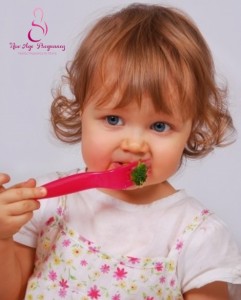
- This allows adequate time for baby to get used to and accept the taste of the individual food. Any possible allergic reactions can also be pinpointed and excluded.
- If buying commercially prepared baby foods, be sure to check labels for age-appropriate food.
2. Choose first foods that provide key nutrients and help to meet energy needs
- The three main food groups to be included are cereal and starchy foods (carbohydrates), protein rich foods and fruits and vegetables. Since we are dealing with food for babies, dairy is also an important component. Weaning foods should provide both calories as well as protein, iron, vitamins, particularly B1, C, D, zinc and calcium.
- Aim for colours in the diet as different coloured fruit and vegetables contain different nutrients.
3. Fresh VS Organic VS Processed foods
4. Fat, Salt and sugar intake
- It is beneficial to your baby’s health if he does not develop a liking for “fatty” or salty foods nor a sweet tooth. Excess fat, especially saturated fat and cholesterol, salt and sugar intake have been implicated in several major diseases. Though these diseases often do not manifest in the young, preventative measures need to start from young. Tooth decay is another reason why sugar should be curbed in young children.
Should I buy organic baby food or use organic food when making my own baby food?
“Organic” is a production term referring to agriculture produced with little or no synthetic fertilizers, pesticides or antibiotics. It does not refer to the characteristics of the foods themselves. As such, they are more environmentally friendly but they are also usually more expensive. Overall, there is no convincing long term evidence to show that organically produced foods are healthier and safer in children. On the same note, the use of pesticides and fertilizers are tightly regulated by local government and environmental agencies. There is also no evidence to show that the levels of pesticides and fertilizers used in today’s conventionally farmed foods are harmful to children. As most fertilizer or pesticide residue is in the skin of the product, it is advisable to remove the peel of fruits and discard the outer layers of cabbages and lettuces.
Is it alright to heat baby food in a microwave?
Microwave ovens are a modern convenience that can save time in cooking and reheating food. In fact, contrary to popular belief, it is one of the best ways to preserve the fresh taste and vitamins in fruits and vegetables. Whether you use the microwave or not is a decision you will need to make. There are some points to remember when doing so:
- Always use microwave suitable dishes. Plastics should not be used.
- Pay attention to the uneven heating of food, leaving some parts cooler or hotter. It is not recommended to heat milk or fluids in the microwave for baby. It is also not recommended to cook meat in the microwave since cold spots can leave meat uncooked. The surviving bacteria may then give rise to food-borne illnesses.
- Heat the food in 15 second increments, stirring after each heating. This helps to ensure there are no hot pockets. The hottest place is usually the centre and the foods in contact with glass surfaces are usually the coolest. Do stand for at least 30seconds at the end with one final stir before serving.
- Food that is “baby ready” should feel lukewarm.
Is it alright to feed baby frozen or canned food?
Commercially available canned and frozen foods are a convenience. Contrary to popular belief, the process of flash freezing (foods frozen at a very low temperature very quickly) after harvesting actually preserves and allows optimal nutrient retention. Similarly, canned foods produced at the peak of freshness of the raw product, preserves maximum nutrients and vitamins. On the other hand, fresh product can also be a source of additives such as pesticide residues. It also loses its vitamins during prolonged transportation and handling. As such, canned and frozen fruit and vegetables can be just as healthy as long as you read the ingredients label. Be careful to avoid added salt, sugar, syrup, thickeners or sauces. Where possible, try to choose foods labelled “no preservatives”, “no artificial colouring or flavouring”.
At home, since baby eats only tiny amounts especially in the early stages of weaning, batch cooking is a convenient and economical way to make food. Purees prepared in bulk can be frozen. Allow freshly cooked puree to cool to room temperature. Then spoon into clean lidded ice-cube trays. When frozen, transfer the cubes into freezer bags. Do label and date the bags. Such frozen food cubes remain safe to use for 3 to 6 months. Of note, water crystals do build up on freezing, giving rise to nutrients leaching or evaporating on thawing. As such, it is advisable to use as soon as possible, ideally within 1 month.

By Dr Ian Ong
Paediatrician
Practice Address:
SBCC Baby & Child Clinic
Blk 721 Ang Mo Kio Ave 8
#01-2803/2805
Singapore 560721
Tel: 6456 8874
Fax: 6458 2278

